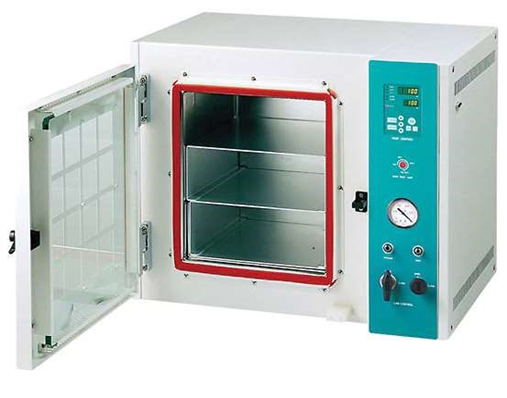
Vacuum Oven

A vacuum oven is a laboratory and industrial device designed for drying, curing, or heat-treating samples under reduced pressure (vacuum conditions). By lowering the air pressure inside the chamber, the boiling point of liquids (especially water and solvents) is significantly reduced, enabling drying at much lower temperatures. This makes it particularly useful for heat-sensitive materials such as pharmaceuticals, electronics, chemicals, and food products. Vacuum ovens provide uniform heating and prevent oxidation, contamination, or degradation of delicate substances.
Features of Vacuum Oven:-
- Vacuum Chamber: Airtight stainless-steel chamber designed to maintain uniform vacuum and temperature conditions.
- Temperature Control: Equipped with digital temperature controllers for precise heating, usually ranging from ambient +10°C to 200–250°C.
- Vacuum System: Connects to an external vacuum pump to achieve low pressure inside the chamber.
- Observation Window: Toughened glass window (in some models) to monitor samples without disturbing the vacuum.
- Uniform Heating: Uses shelves or heating plates with uniform heat distribution.
- Safety Features: Over-temperature protection, pressure release valve, and insulation for safe operation.
- Corrosion Resistance: Inner chamber made of stainless steel for durability and chemical resistance.
- Energy Efficient: Operates at lower temperatures due to vacuum conditions, reducing power consumption.
- Applications: Used in drying of delicate samples, removal of solvents, curing of resins, degassing, and testing in pharmaceutical, chemical, and electronics industries.